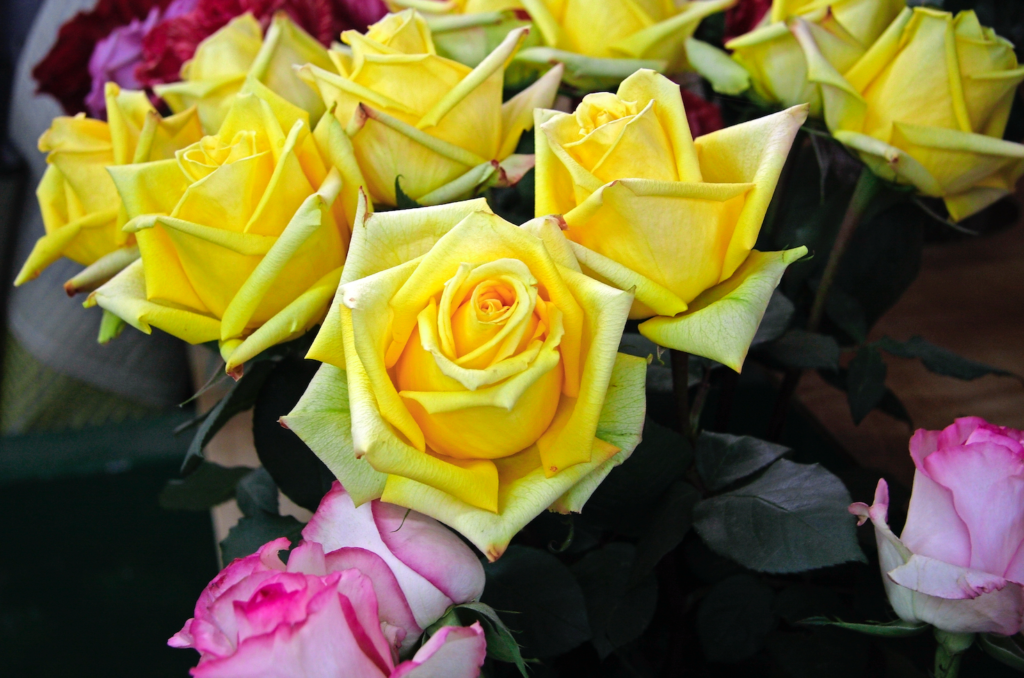Ecuador is in the middle of a full-blown financial crisis that has brought rose grower companies and their providers to the ledge. The industry has kept afloat this long due to pervasive and massive debt levels; with growers playing ‘bank & provider roulette.’
Let’s be frank, monthly cash flows are reaching their limit, liquidity is nonexistent, and all these leverage efforts ultimately amount to nothing. Some weeks their feet may shuffle backward, but as time passes onwards, the border edges inexorably forward. The Ecuadorian rose industry cannot sustain operations as it stands; it is not feasible to survive with current financial burdens.

Another contributing factor to take into consideration is the high level of rotatory debt that the Ecuadorian grower has. Providers are extending themselves to their limits with credit lines of 90, 120 and 180 days. Previously, the market worked within 30 to 60 days, a reasonable pay period manageable for all parties. The transition from 60 to 180 days has wreaked havoc with everyone in the industry, and it has one culprit: CASHFLOW.
- Uncompetitive advantage. Ecuador has several factors that make it harder to compete with other regions.
- The tax on roses in the North American market can easily mean 0.02-0.04 cents surcharge on the total rose price.
- Cargo agencies higher freight rate for Ecuadorian shipments can add another 0.02-0.04 cents vs their Colombian counterparts.
- The local dollarized economy increased production costs and eliminated the competitive edge non-dollarized economies have.
Finally, the industry must take into consideration the high cost of operating a business in Ecuador; as most machinery and agriproducts are imported at a premium, making operations expensive in comparison to their neighboring country, Colombia. Innovating via the importation of existing technologies becomes very expensive.
Kairos
Ancient Greeks had two terms to refer to time: Chronos, sequential or chronological time, and Kairos which signifies the right, critical, or opportune moment. As it is commonly known, roses are a perishable product subject to holiday market trends. Thus, their harvest must occur at specific dates to ensure maximum profits throughout the year.
Ecuador’s use of Kairos has been abysmal for the last few years. In the industry, the senior agronomist can make it or break it depending on how accurately it timed the rose harvest. Regrettably, Ecuador has struggled with this accuracy for the past few years, continuously missing harvesting at Valentine’s select dates. Reaping at the inopportune moment translates to lower/miserly sales or increased credit notes due to shipping old roses.

Net Profits
The local rose industry that does not belong to giant corporations fit into four groups: (1) large producers, (2) medium-sized or sandwich producers, (3) small-niche farms, and (4) micro-producers who are unlikely to operate legally.
Each group functions differently and has slightly different target markets, but the critical variable they all share is production costs. Group (1) produces roses at a price between USD 0.25-0.27, Group (2) produces roses at USD 0.28-0.31, Group (3) is between USD 0.32-0.35, and Group (4) has no data, due to their lack of legality it is hard to measure their output or amass reliable information. The average cost per rose is USD 0.30 cents for the industry. If industry-wide production costs approach that value, the risk for business continuity will be immeasurable.
Price per stem
During 2018 Q3 and Q4, the sale value per stem decreased steadily; we are in a bearish market. Inevitably, it reached a low point of under USD 0.34. The net profit margin between sale value and production costs is critical to ensure satisfactory operations in all businesses. As of now, farms are starting to leak money, and it won’t be long before their profits cannot cover their operating expenses.
To make matters worse not all produced roses sell. Current analysis and hearsay estimate that anywhere between 15% and 20% of 2018’s production never made it to a cargo agency due to lack of sale volumes. Also, for the first two months of 2019 cargo agencies have been complaining of low volumes.
Furthermore, it is important to note that during Valentine’s shipments the price per stem fell in comparison to 2018. There’s a big storm brewing in the horizon, and it nears the shore, more and more when the industry ignores hard cold data.
Sales Issues
Today Ecuadorian growers are consistently looking to renovate their sales departments with countless ads on job sites, but the reality is that there are no new people and barely any new contacts.

The right salespeople already have jobs and are too expensive to transfer from one company to another. Some of the job seekers are just playing job roulette, anticipating a potential dismissal, as current market conditions do not allow a salesperson to meet the sales expectations of their employer.
In Ecuador, export roses are mainly sold through an open market, a sales tactic that has brought more harm than profit to the national floriculture industry. When the supply is higher than the demand, free-market tactics result in low prices and unsold inventories.
Grower’s desperation
Growers are dumping roses at low prices into markets because production levels surpass sales capacity across the industry. Therefore, dumping rose prices is turning the market sour.
Wholesalers can purchase roses for USD 0.10-0.12 in some cases. Let’s be realistic; no company can cover its costs for that amount. The only ones making money off those values are the buying speculators in Miami or Los Angeles. Yes, not everyone sells or buys at these prices, but those that do move enough volumes to influence the market. Ultimately, growers feel the pressure to conform to their foolishness.
Forward
Nevertheless, people on both sides of the business can agree that stable prices are the best for everyone. By having stable prices, the grower can accurately forecast its profits and production levels, and the buyer can keep reasonable prices for their consumers year long. However, little is being done to ensure that both parties don’t break the industry. Unlike the internet, recovering from such a crash will take years and the livelihood of many Ecuadorian families.
Besides ubiquitous current financial burdens, Ecuadorian flower growers need access to lower interest rates to reinvest in technology, R&D, and innovation. The “Country Risk” (local banking term) has made borrowing money more expensive for Ecuadorian farms looking to invest in automatization. Without automatization, Ecuadorian farms have no chance of lowering their production costs. Without access to funds, local farms miss out in opportunities to invest in innovative varieties coveted by capricious buyers.

Ecuadorian farms must seek financial opportunities to reinvest in their companies. With time every industry evolves, every market matures, and if pioneers or market leaders do nothing to stay ahead of the curve, they will be inevitably kicked out by new and nimbler players.
Ecuadorian floriculture is here to stay. Too many families depend on the industry’s success to neglect acting against the impending crisis. The rose industry is a crucial pillar to the national economy as it is one of Ecuador’s main exports and it generates substantial amounts of wealth in taxes paid to the government. The importance of the Ecuadorian rose industry must be understood by all parties to create enough collaborative efforts to move forward.
Luis Cadavid is a C-Level Executive with a demonstrated track record at exceeding expectations, reducing inefficiencies and opening new markets in the commodities industry. He is also a Business Consultant specialized in sales, management, agribusiness and human resources.









